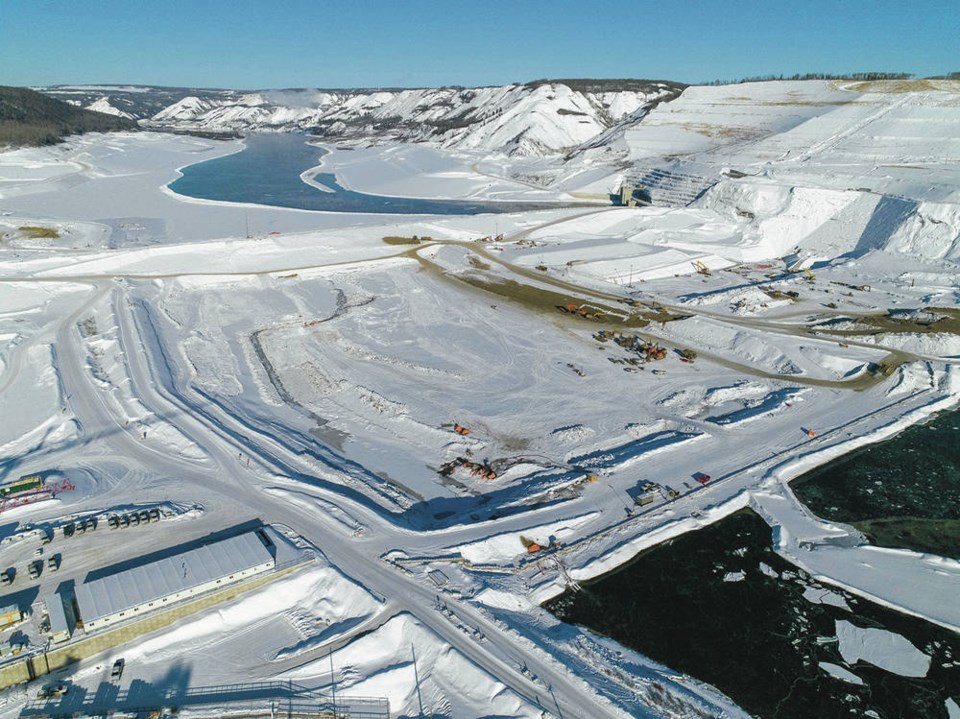I was surfing YouTube this week looking at Site C videos, which is a pretty stark admission of how far someone can sink into social isolation and may be why people tend to shy away from me.
But never mind that. What caught my imagination was a comparison someone came up with in a B.C. Hydro-produced piece on the $8.3-billion … no, $10.7-billion … no, $16-billion project.
In a reassuring two-minute featurette called “2 Million Cubic Metres of Concrete is a Lot of Stability,” the narrator tries to bring home how much concrete that is, and settles on a brilliant illustration.
“That’s six times the volume of concrete used to build the Burj Khalifa tower in Dubai.”
That 880-metre-high marvel in the desert is the tallest building in the world. So the concept helped to convey how enormous the project is.
And if it works for illustrating volume, it can work for making the costs understandable as well.
The trouble with using dollar values is that all the zeros get confusing. Billions and millions sound the same and can get juxtaposed.
Using “Burj Khalifas” might make it easier as the project proceeds. The tower in the desert cost about $1.6 billion. So the Site C project went from about 5 BKs to 6.5 BKs after the NDP rethink and restart in 2017. After the independent review last week, it shot up to 10 BKs.
The new estimate, by the way, is suspiciously round. It’s $16 billion in the old-fashioned description. But all the previous estimates went to at least one decimal point: $7.9 billion, $8.335 billion, $10.7 billion. The new estimate looks more like $16 billionish.
It could go higher. Or maybe it’s padded so that when the project nears completion — as the 2024 election arrives — it could be on or under the new budget.
Premier John Horgan said: “I am confident that the numbers that we put forward today are certain for today.”
But taken literally, that guarantee expired at midnight of the day he said it, last Friday.
The dam and the tower have two similarities. The dam is almost as long as the tower is high. And the tower builders ran out of money halfway through.
Site C won’t do that, because public bodies never seem to run out of money. But it was roughly in that position before the decision to buttress the budget.
Some of the hike relates directly to the volume of concrete. It turns out that two million cubic metres of concrete is a lot of stability — but not enough.
The release of special adviser Peter Milburn’s report last week included a lot of technical discussion of the subterranean issue. The scope and the required fix haven’t been fully delineated yet. But, essentially, a five-millimetre crack developed deep under where the design assumed the solid bedrock lay.
So the concrete buttressing at the 800-metre long dam has be made more robust by sinking 125 huge steel and concrete piles about 20 metres deep.
That and other work could take another Burj Khalifa or so worth of concrete. It’s part of the recent budget hike, but a full breakdown isn’t available.
Milburn noted steady creep throughout the project. “B.C. Hydro has paid very large sums to the main civil works contractor for geotechnical issues.”
There have been amending agreements, change orders and direct work orders, all on top of the original contract. There was also a one-year time extension.
So the crack under the foundation, the earlier tension crack, the year-long delay from missing the deadline to divert the river and the pandemic slowdown for a few months add up to a huge hike.
Some of those factors are unavoidable. But could they have been at least foreseen?
Milburn’s analysis said the risk-management approach taken by B.C. Hydro failed. It’s a sophisticated program that identified 1,000 specific risks. But it “has not been an accurate predictor of future costs,” and underestimated most risks, he said.
It was so sophisticated that few managers appeared to understand it. And as noted earlier, B.C. Hydro froze out the watchdogs who were trying to quantify risk in any event.
Whatever happens to the price tag, fixing the risk management may avoid taxpayers being blindsided by more outlandish overruns. At least we’ll see them coming.
To paraphrase the old joke: “A Burj Khalifa here and Burj Khalifa there — pretty soon you’re talking real money.”



